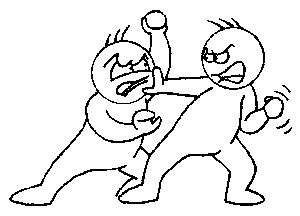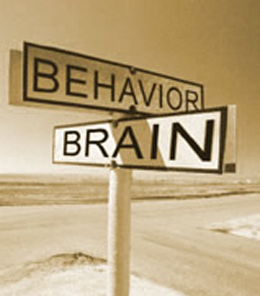Why Conduct Disorder Is Difficult to Understand
The two primary guides to diagnosing disorders, both of which are used in the diagnosis of Conduct Disorder are the Diagnostic and Statistics Manual of Mental Disorders, 4th Edition, Text Revision (DSM-IV-TR) and the International Statistical Classification of Diseases and Related Health Problems, 10th Revision (ICD-10).
In some cases, the two guides have a similar analysis of disorders and how they relate to each other. In the case of conduct disorder, however, the two views are different, complicating understanding.
The DSM-IV-TR View of Conduct Disorder
The DSM-IV-TR lists Conduct Disorder as a subcategory of “Attention-deficit and disruptive behavior disorders,” along with Oppositional Defiant Disorder, Attention-Deficit Hyperactivity Disorder, and Disruptive Behavior Disorder NOS (Not Otherwise Specified). There are three specific subcategories of Conduct Disorder, distinguished by the time of onset: in childhood, during adolescence, or unspecified.
Diagnosing Conduct Disorder using the DSM-IV-TR criteria, which should only be done by qualified mental health professionals. If the person is 18 or older, a diagnosis of Conduct Disorder cannot be given unless the criteria for Antisocial Personality Disorder are not met.
The descriptions make it clear that this is a more serious disorder than Oppositional Defiant Disorder. For a diagnosis, the person must demonstrate a pattern of behavior that has included three or more symptoms of those listed below for at least the past 12 months and shown at least one in the past 6 months:
• Aggression towards people and animals
- frequently bullies, threatens, or intimidates
- frequently initiates physical altercations
- has employed a weapon capable of causing serious physical harm
- has shown physical cruelty to people
- has shown physical cruelty to animals
- has confronted and stolen something from a victim
- has forced sexual activity on someone
• Property destruction
- has set at least one fire meaning to cause notable damage
- has purposely destroyed property in some other way
• Deceit or theft
- has forcibly entered someone else’s house or car without permission
- frequently lies, conning others
- has stolen items without a confrontation
• Serious rule violations
- has frequently broken the house rules and stayed out at night, since before age 13
- at least twice has stayed away from home overnight without permission or once for an extended period
- has frequently been truant from school, since before age 13.
In addition, these behavior disturbances must:
• result in “clinically significant impairment” in either academic, social, or occupational functioning;
If Childhood-Onset type is diagnosed, at least one characteristic must have manifested prior to age 10, whereas is Adolescent-Onset is diagnosed, there must be an absence of manifestation of any of the behaviors prior to age 10. The severity can be designated as mild, moderate, or severe.
ICD-10 View of Conduct Disorder
ICD-10 takes a different approach to Conduct Disorder than the DSM-IV-TR. It includes Conduct Disorder under the category “Behavioral and emotional disorders with onset usually occurring in childhood and adolescence” and designates six subcategories, which are:
• Conduct disorder confined to the family context
• Unsocialized conduct disorder
• Socialized conduct disorder
• Oppositional Defiant Disorder (ODD)
• Other conduct disorders
• Conduct disorder unspecified.
So ODD is a subset of Conduct disorder in the ICD-10 analysis, but not in the DMS-IV-TR analysis, and the category of Conduct Disorder is subdivided in a completely different way, based not on age of onset, but on other specifics of how it manifests.
Diagnosis of any of the ICD-10 subgroups requires that a child first meet the criteria for Conduct disorders generally. This means that the pattern of disruptive behavior–which may be dissocial, aggressive, or defiant—must both be repetitive and persistent, notably beyond outside age-appropriate expectations, and last for six months or longer. If a different psychiatric diagnosis explains the symptoms, that diagnosis should be used.
The further criteria that separate the subcategories are:
• Conduct disorder confined to the family context occurs only or almost only in the home and with members of the family or household.
• Unsocialized conduct disorder is marked by serious abnormalities in relationships between the child and other children.
• Socialized conduct disorder is diagnosed when a person gets along well with peers, and is generally characterized by delinquent activities as a group, or gang, as well as truancy.
• Oppositional Defiant Disorder is usually diagnosed in younger children and the behaviors demonstrated are better characterized as disobedient, defiant, and disruptive rather than delinquent, dissocial, or aggressive.
Understanding a Diagnosis of Conduct Disorder
If you or someone you know has a child who has received a diagnosis of conduct this order, you can use the information in this article to ask questions and find out more. Which type of conduct disorder has been diagnosed and according to which definition? Which criteria were met to support the diagnosis?
Sources
http://www.surgeongeneral.gov/library/mentalhealth/
chapter3/sec6.html#disruptive
http://apps.who.int/classifications/apps/icd/icd10online/?gf90.htm+f913
http://www.surgeongeneral.gov/library/mentalhealth/
chapter3/sec6.html

